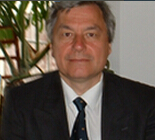


Abstract—Digital image deblurring is a classical real-world problem with applications ranging from astronomy to photography. For aerial digital images, image blurring is inevitable due to object moving, platform moving and possible camera shaking. Image deblurring is to estimate the actual scene by sharpening the observed images being blurred or corrupted by any motion. At the same time, it aims to retain important object features as much as possible. It plays an important role in information decision support systems. There are many numerical filtering, deconvolution and optimization approaches to sharpen the blurry images. Certain approaches even combine with implementation of artificial intelligence. Some of them are in fact very complicated in theory and practice. This article applies several fundamental methods to aerial image deblurring. Satisfactory results on each level of true color aerial images are obtained with ease using these fundamental technologies. In addition, quantitative measures are proposed to evaluate the outcomes in an objective manner, where metrics of discrete entropy, relative entropy, discrete energy, mutual information, contrast and homogeneity are introduced for evaluating aerial image deblurring. This approach has the potential for accurate decision making.
Index Terms—Image deblurring, deconvolution, filtering, optimization, quantitative analysis.
Z. Ye and H. Mohamadian are with Southern University, Baton Rouge, Louisiana 70813, USA (e-mail: zhengmao_ye@subr.edu; habib_mohamadian@subr.edu).
H. Mohamadian is with Southern University, Baton Rouge, Louisiana70813, USA (e-mail: habib_mohamadian@subr.edu).
Cite: Z. Mao Ye and H. Mohamadian, "Comparative and Quantitative Study of Fundamental Approaches on Digital Aerial Image Deblurring," International Journal of Modeling and Optimization vol. 2, no. 4, pp. 378-383, 2012.
Copyright © 2011-2025. International Journal of Modeling and Optimization. unless otherwise stated.
E-mail: editor@ijmo.org